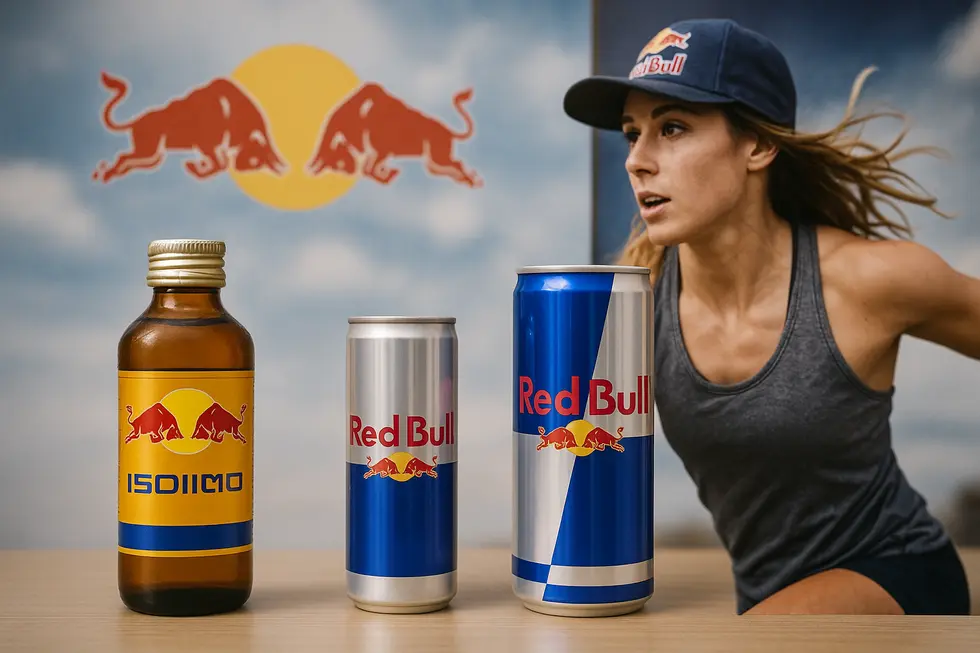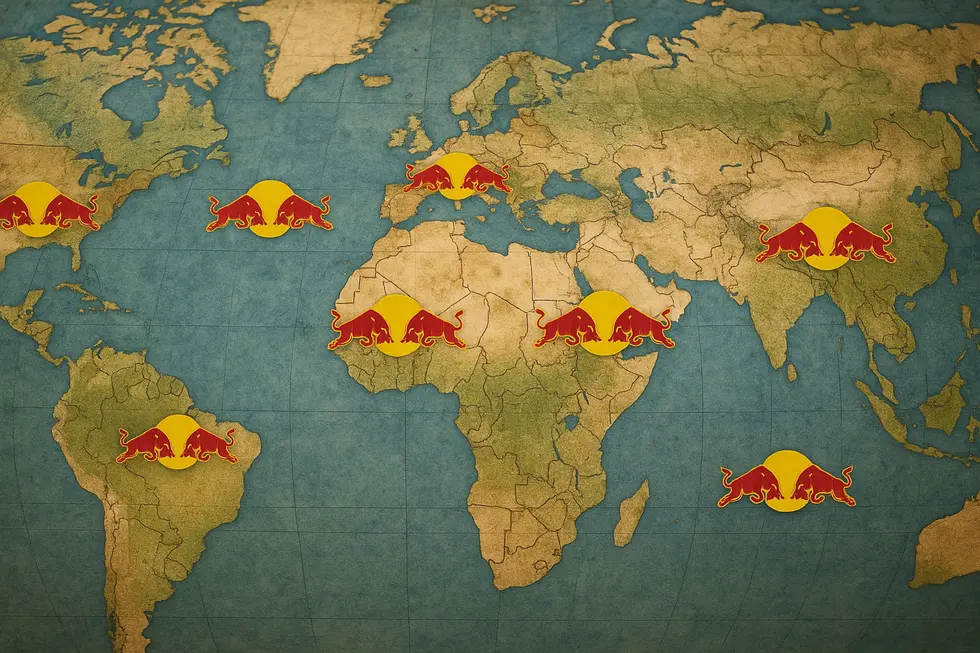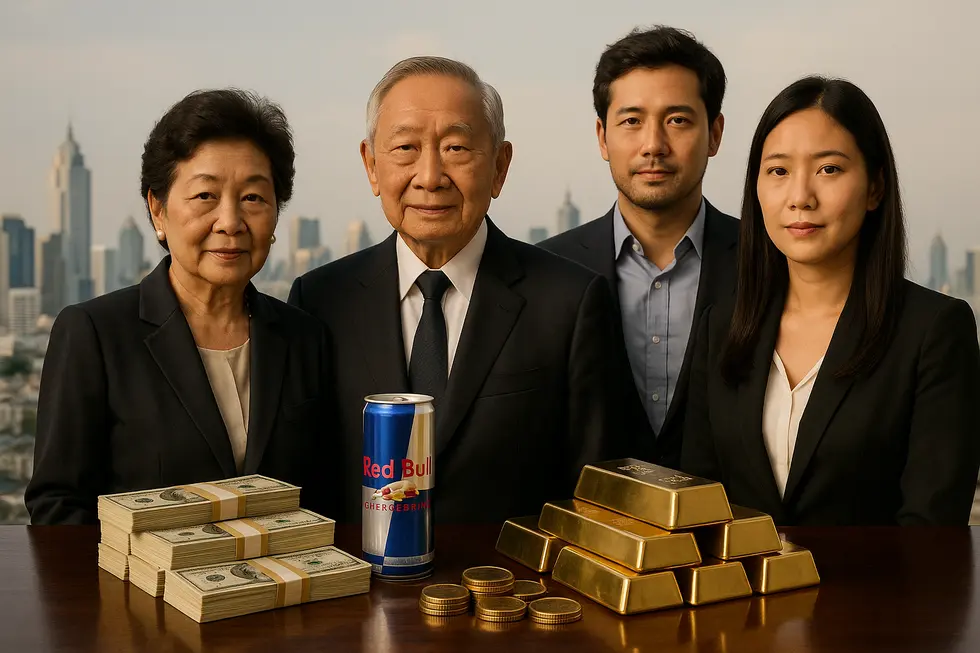No products in the cart.
Energy Drinks, Red Bull Energy Drink
Red Bull Global Journey: From Thai Tonic to World Icon
Red Bull’s remarkable transformation from a Thai energy tonic into a global powerhouse is nothing short of inspirational. Initially designed to combat laborers’ fatigue in Thailand, Red Bull’s origins trace back to Chaleo Yoovidhya’s creation of Krating Daeng. This chapter manifests the journey of Krating Daeng turning into Red Bull under Dietrich Mateschitz’s vision. The innovative adaptation for Western markets set the stage for global expansion, with branding efforts catapulting Red Bull into the spotlight. Today, the brand is intertwined with extreme sports and modern culture, leaving behind an enduring legacy led by the Yoovidhya family. This article dissects each pivotal stage in Red Bull’s illustrious ascent.
Table of Contents
The Genesis of Red Bull: Chaleo Yoovidhya’s Visionary Creation

The transformation of a humble Thai tonic into a global brand is a tale of innovation and strategic collaboration. At the heart of this story is Chaleo Yoovidhya, a visionary entrepreneur who crafted Krating Daeng in 1976 to combat fatigue among Thailand’s workforce. This energy drink originally catered to labor-intensive workers, offering them a vital energy boost and stamina to complete their demanding tasks.
A crucial turning point in Krating Daeng’s journey to international recognition was the encounter between Chaleo Yoovidhya and Dietrich Mateschitz in the 1980s. Mateschitz, an Austrian businessman, immediately saw the potential of Chaleo’s creation. Together, they embarked on a partnership, each investing significantly into Red Bull GmbH. This collaboration ensured that Red Bull was not merely exported but intelligently adapted for Western markets, with carefully adjusted formulas and branding that appealed to a new demographic in need of an energy boost.
Their innovative marketing strategies are pivotal to Red Bull’s success. Rather than relying on traditional advertisement methods, they embedded the drink within the cultures of extreme sports and adventure, crafting an association between Red Bull and dynamic, energetic lifestyles. Under the Yoovidhya family’s strategic direction, Red Bull transformed from a simple energy drink to an emblem of vigor and youth culture, illustrating the remarkable power of Chaleo Yoovidhya’s original vision. For more insights, visit here.
The Ambitious Collaboration: How Dietrich Mateschitz and Chaleo Yoovidhya Transformed an Idea into Red Bull GmbH

In the early 1980s, an unconventional partnership was forged between Dietrich Mateschitz, an Austrian businessman, and Chaleo Yoovidhya, a Thai entrepreneur. This alliance was integral to the birth of Red Bull GmbH—a pioneering force in the energy drink market. Mateschitz stumbled upon Krating Daeng, Yoovidhya’s local energy tonic, during a visit to Thailand. He recognized the potential to adapt this traditional beverage for Western audiences, sparking a business revolution.
With each partner contributing $500,000, they founded Red Bull GmbH in 1984, sharing ownership in a nearly equal partnership. Their collaboration was not just about capital; it was about combining vision with local innovation to craft a product that resonated globally. By 1987, Red Bull was introduced in Austria, backed by a strategic facelift in both recipe and branding to appeal to Western consumers.
Rather than relying on traditional marketing avenues, Red Bull chose a bold path—associating itself with extreme sports and dynamic youth culture. This disruptive strategy positioned Red Bull not merely as a drink but as a symbol of adventurous spirit. The result was staggering: Red Bull rose from niche drink to global dominator, capturing imaginations and palates worldwide.
Red Bull’s journey from a modest energy tonic to an international phenomenon is a testament to the power of visionary partnership, clever marketing, and cultural adaptation. Explore further details in Nation Thailand.
Crafting a Cultural Synergy: Red Bull’s Journey to the West

The transformation of Red Bull from the humble Thai Krating Daeng to the globally recognized energy drink entailed more than just a change in formula. This metamorphosis demanded a deep understanding of cultural nuances and market dynamics, especially in Western contexts. When Dietrich Mateschitz came across Krating Daeng during a visit to Thailand, he envisioned a unique potential for Western markets. He saw beyond the drink’s utility for laborers, perceiving a broader appeal to young, energetic consumers seeking a buzz.
The adaptation process was ingenious. By adding carbonation and adjusting the taste to suit Western palates, Mateschitz and Chaleo Yoovidhya created a beverage that combined the essence of Krating Daeng with a refreshing twist. However, it was Red Bull’s branding strategy that truly set it apart. The logo, featuring two charging bulls, symbolized more than mere energy; it embodied aggression and vitality, appealing to thrill-seekers and adventurers.
Red Bull deftly navigated regulatory landscapes and skepticism about energy drinks by cultivating brand equity through experiential marketing. By associating with extreme sports and youth culture, it created a narrative of adventure and resilience. This approach not only circumvented traditional retail channels but also cultivated a brand synonymous with exhilaration and endurance, eventually cementing Red Bull’s place in the pantheon of global brands. For a deeper understanding of how energy drinks have evolved, you can explore the bulk energy drink market insights.
Transforming Krating Daeng: Red Bull’s Metamorphosis into a Global Powerhouse

Dietrich Mateschitz’s encounter with Krating Daeng during a visit to Thailand in the early 1980s marked the inception of what would become a global phenomenon: Red Bull. Seeing the untapped potential in this local tonic, Mateschitz envisioned a new kind of product tailored for Western markets. His partnership with Chaleo Yoovidhya, the creator of Krating Daeng, proved to be the catalyst for a groundbreaking transformation.
In 1984, with each partner investing $500,000, they founded Red Bull GmbH, setting the stage for a brand that would redefine the energy drink sector. The reformulation involved not only tweaking the taste to appeal to European and American consumers but also decoupling the drink’s identity from its Asian roots and crafting a universally appealing brand image. Red Bull debuted in Austria in 1987, branded as a “functional beverage” with the promise to “give you wings.”
Despite initial skepticism over its taste and packaging, Red Bull distinguished itself through clever marketing. By targeting students, nightlife enthusiasts, and athletes, it carved out a niche away from traditional family-oriented beverages. Its subsequent climb to global dominance was accelerated by associating with extreme sports and daring lifestyles, reshaping it into more than just an energy drink but an emblem of youth culture around the globe. Learn more about Red Bull’s export strategies.
Building a Global Empire: The Yoovidhya Family’s Legacy with Red Bull

The story of Red Bull’s incredible rise is as much about its product as it is about the visionary minds that propelled it to success. At the heart of this story is the Yoovidhya family, whose transformational journey began with Chaleo Yoovidhya. Born into poverty in Northern Thailand as the child of Chinese immigrants, Chaleo’s path to success was both improbable and inspiring. His creation, Krating Daeng, a local Thai energy tonic intended to rejuvenate laborers, was the precursor to Red Bull.
This serendipitous creation caught the eye of Austrian entrepreneur Dietrich Mateschitz, who saw its global potential during a trip to Thailand. Together, they co-founded Red Bull GmbH, each contributing $500,000 to bring this idea to the world. The Yoovidhya family retained a 51% majority stake through their Hong Kong-based company TC Agro Trading Company, ensuring they remained at the helm of this burgeoning empire.
Following Chaleo’s passing in 2012, his son Chalerm took over the reins, continuing the family’s legacy of innovation and business acumen. Under this leadership, Red Bull expanded its reach, becoming synonymous with energy, vitality, and youth culture worldwide. The Yoovidhya family’s dedication to maintaining a privately-held structure has allowed Red Bull to adapt seamlessly to market challenges, preserving its dominance. Read more on Red Bull’s wholesale distribution to understand the scope of their market strategies.
Final thoughts
Red Bull’s journey from a local energy tonic to a global icon showcases a remarkable blend of innovation, strategic branding, and international collaboration. Chaleo Yoovidhya’s vision paired with Dietrich Mateschitz’s business acumen turned a humble drink into a worldwide phenomenon, with Red Bull now reigning over the energy drink market and youth culture. The Yoovidhya family’s legacy and wealth demonstrate the real-world impact of Red Bull’s success. This legacy continues to influence the beverage industry and beyond, inspiring entrepreneurs globally.
👉 Looking for a trusted Redbull Energy Drink wholesale supplier? Contact Asia Grocery Co., Ltd for bulk deals and export-ready inventory.
About us
Asia Grocery Co., Ltd is a trusted distributor, wholesaler, and exporter of fast-moving consumer goods (FMCG) from Vietnam, backed by over 20 years of expertise. We deliver authentic products from globally recognized brands such as P&G, Unilever, Redbull, Coca-Cola, Pepsi, Asiadeli, along with traditional and culturally significant Asian products, catering to customers worldwide with a special focus on Vietnamese and Asian communities abroad.

